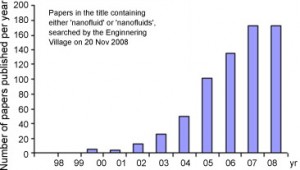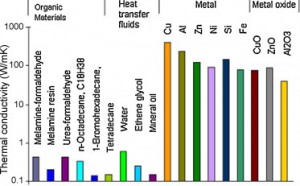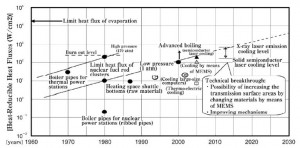A variety of Generation III/III+ water-cooled reactor designs featuring enhanced safety and improved economics are being proposed by nuclear power industries around the world in efforts to solve the future energy supply shortfall. Thermal-hydraulics is recognized as a key scientific subject in the development of innovative reactor systems. Applications are being advanced with the introduction of new technologies such as nanotechnology. Nanofluids are potential heat transfer fluids with enhanced thermophysical properties and heat transfer performance can be applied in many devices for better performances. Recent researches have indicated that substitution of conventional coolants by nanofluids appears promising. Specific application of nanofluids in engine cooling, solar water heating, cooling of electronics, cooling of transformer oil, improving diesel generator efficiency, cooling of heat exchanging devices, improving heat transfer efficiency of chillers, domestic refrigerator-freezers, cooling in machining, in nuclear reactor and defense and space have been applied.
The development of viable nanofluids for use in water-cooled nuclear systems could result in a significant improvement of their economic performance and/or safety margins. Especially, it was determined that the system has a reasonably low failure probability, and that, once injected, the nanofluid would be delivered effectively to the reactor vessel surface within seconds. It was also shown analytically that the increase in decay power removal through the vessel using a nanofluid is about 40%, which could be exploited to provide higher in-vessel retention (IVR) safety margin or, for a given margin, to enable IVR at higher core power.
Fig. 3-1 Growth of publications by the nanofluids community
Fig. 3-2 Comparison of the thermal conductivity of common liquids, polymers, and solids
Fig. 3-3 Required heat removal capacity





